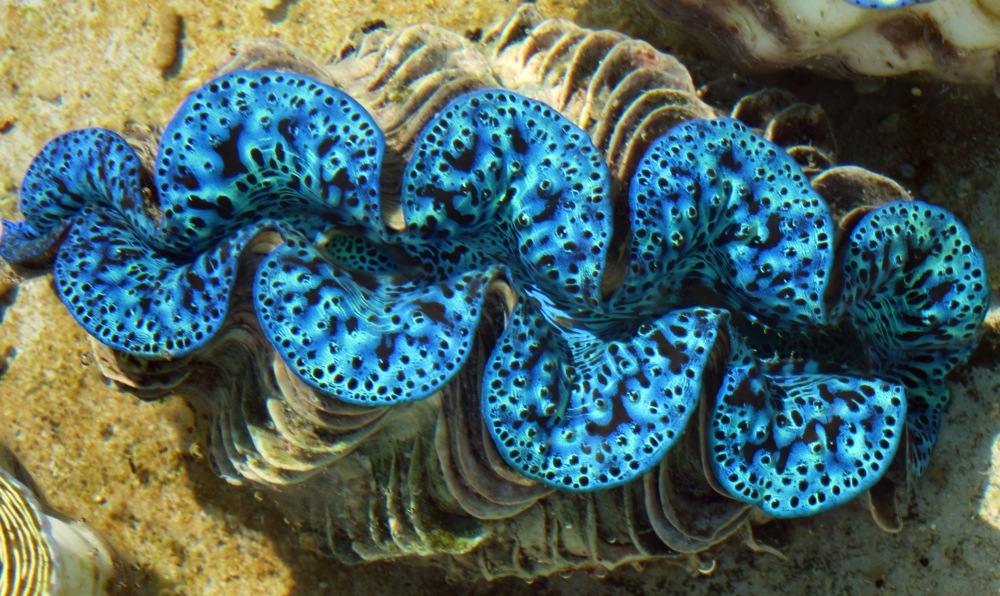Color-Morphing Clams Could Inspire New Smartphone & TV Screens


Iridescent cells in the flesh of giant clams could one day help scientists design more efficient solar panels, and television and smartphone screens that are easier on the eyes, researchers say.
Giant clams are native to coral reefs of the Pacific and Indian oceans and can live up to 100 years in the wild. Although they live in nutrient-poor water, they can grow up to 47 inches (120 centimeters) long because of symbiotic photosynthetic algae — the clams absorb nutrients the algae generate, while the algae live off nitrogen-rich waste from the clams, previous research found.
In a new study, scientists focused on iridescent cells in the exposed flesh of the clams. These cells, known as iridocytes, generate a dazzling array of colors, including blues, greens, golds and, more rarely, white. [Biomimicry: 7 Clever Technologies Inspired by Nature]
"We are studying the clams to see how their iridescent cells interact with the algae to enhance photosynthesis,"study lead author Amitabh Ghoshal, an optical physicist at the University of California, Santa Barbara, said in a statement. "Like solar cells, photosynthesis involves converting light into energy. As we expand our understanding of the clam's system for light collection, we can take the lessons from it to create solar cells that more efficiently convert light to energy."
The researchers are systematically investigating each color the clams produce to understand the mechanisms involved in producing the color and its biological significance. To learn more about the white color, the scientists analyzed live giant clams of the species Tridacna maxima and Tridacna derasa.
Surprisingly, both clam species create their white hue by mixing colors together much like video displays mix red, blue and green pixels to make white.
"We have discovered a new way that animals — in this case, the giant clam — makes white color," Ghoshal told Live Science. "Most white coloration in animals is produced either by micron-sized spheres or lumps, which is similar to how paint looks white, or by reflective structures that have a largely varying spacing between them, which allow for reflecting visible light of a broad range of colors."
Get the world’s most fascinating discoveries delivered straight to your inbox.
In addition, the researchers discovered that the two species of giant clams employed different methods for mixing colors to produce white. In Tridacna maxima, white comes from tight clusters of differently colored iridocytes. In Tridacna derasa, white results from iridocytes that are each multicolored and look white from a distance.
Most of today's video displays rely on light sources such as LEDs, while giant clams only need sunlight. The iridocytes of the mollusks contain tiny multilayer structures of proteins that act like mirrors to reflect different colors of light, the researchers said.
If the researchers can create and control structures similar to those that generate color in the clams, it might be possible to build color-reflective displays that work with ambient light sources such as sunlight or normal indoor lighting, Ghoshal said.
"Producing color the way giant clams do could lead to smartphone, tablet and TV screens that use less power and are easier on the eyes," Ghoshal said in a statement.
In addition, the researchers want to see if structures like those found in giant clams might improve the efficiency of solar cells. "If we could use what we learned from the clams to build a very efficient distributed light-gathering system, then we could use that to make more efficient 3D solar cells that require less area than our present rooftop and land-based solar farms," Ghoshal said in a statement. The scientists are currently collaborating with Guillermo Bezan, director of the Center for Polymers and Organic Solids at the University of California, Santa Barbara, to design and test solar cells inspired by clams.
Ghoshal and colleagues Elizabeth Eck and Daniel Morse at the University of California, Santa Barbara, detailed their findings Jan. 19 in the journal Optica.
Follow Live Science @livescience, Facebook & Google+. Original article on Live Science.



